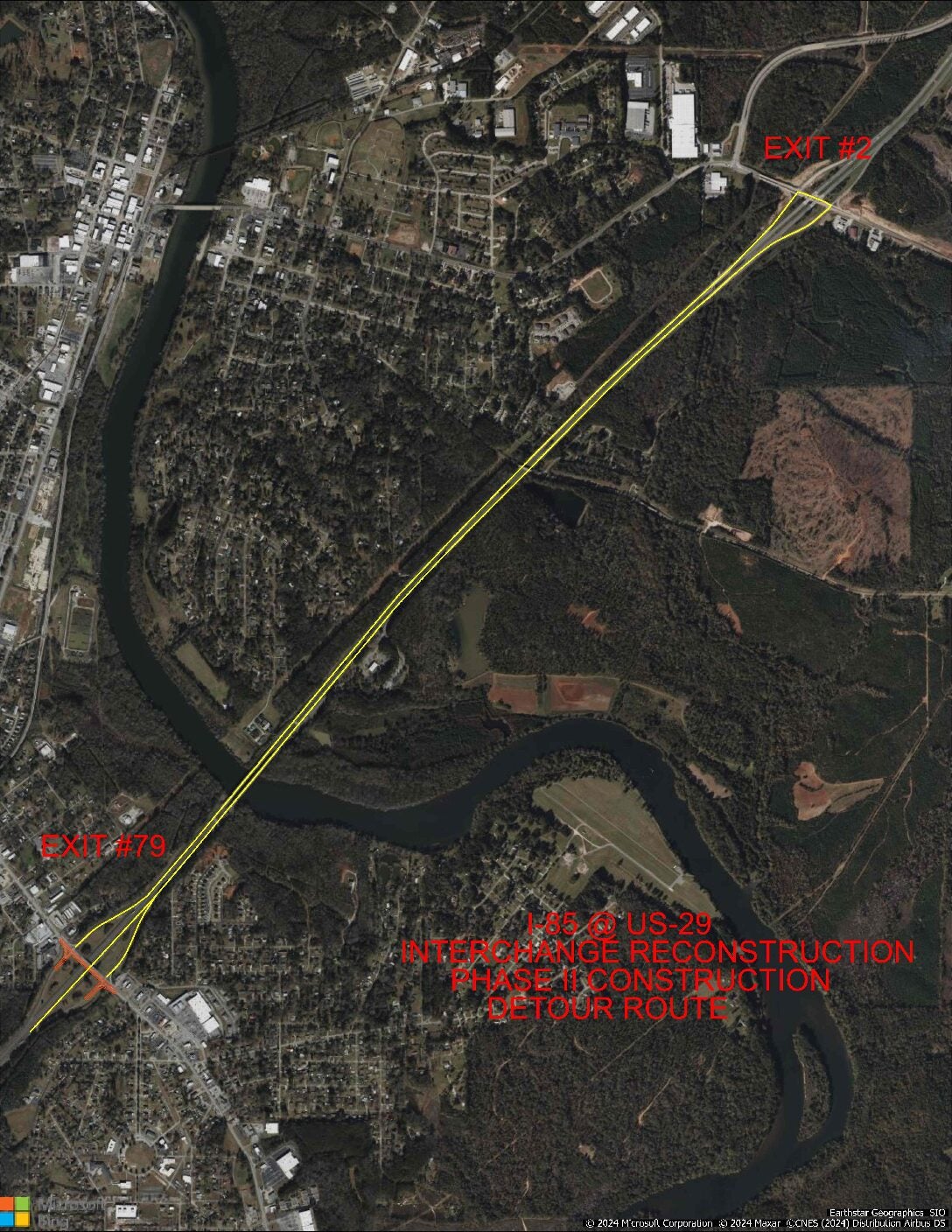CVHS learns about Marquis de Lafayette
Published 10:00 am Tuesday, October 27, 2020
|
Getting your Trinity Audio player ready...
|
The Chattahoochee Valley Historical Society made some history itself at Sunday’s quarterly meeting, hosting its first-ever virtual program.
The Zoom video conference was moderated by Charlie Powers and featured a book talk by Dr. Lawrence “Larry” Krumenaker, who discussed some elaborate research he’s done in tracing the Marquis de Lafayette’s journey across the new state of Alabama in 1825. It was part of a grand return by a hero of the American Revolution to see a developing country nearly 50 years after its independence.
“This is a red-letter day for us,” CVHS President Malinda Powers said at the start of the Zoom cast. “It’s a unique and different first-time event for us. Zoom gives us a chance to reach out to people in a way we haven’t before.”
Approximately 25 people watched the program at a safe distance from risking COVID-19. Many of them asked Krumenaker questions following his presentation.
Krumenaker is what one could call a Renaissance man. He’s traveled and taught at universities all over the world. He’s been credited with discoveries in the field of astronomy and has written a number of books, one of which he discussed on Sunday.
“Nine Days Traveling” recounts Lafayette’s journey through the six-year-old state of Alabama.
Krumenaker said that Lafayette had an unusual upbringing in his native France. His dad was a military officer and was killed in action when he was only two years old. His widowed mother gave him up to be raised by grandparents. When he was around 10 years of age, his mother invited him to come and live with her in Paris. He agreed, but she died of natural causes shortly after that, leaving the young Lafayette very wealthy. The driving force in his life was that he hated the British. He also wanted France to have a constitutional monarchy. The king of France at the time, Louis XVI, was a bit leery of the young aristocrat.
“He was okay with him as long as he didn’t have power over people,” Krumenaker said.
The young Lafayette was inspired by America’s 1776 revolt against British rule. He wanted to go there and help out in any way he could.
“He had to sneak out of the country to get there and had to learn to speak English,” Krumenaker said. “He had to learn on the fly and to learn the ways of Americans.”
When the two met, George Washington took a liking to him and would grow to love him as he would a son.
“He was one of the chief reasons we won at Yorktown,” Krumenaker said.
That American victory won the War of the Revolution, guaranteeing freedom for a new country.
Lafayette returned to France hoping that the kind of democracy that took place in America could happen in France as well. There was hope with the French Revolution in 1789, but that went too far with thousands of people being executed. Lafayette would spend time in prison during those difficult years. Krumenaker said that he had been down on his luck for a long time when in 1824 he got an invitation from President James Monroe to return to the U.S. and tour the country he helped liberate.
“He had to sneak out of France a second time to go there,” he said.
He was welcomed as a conquering hero.
“The only time he had to spend his own money was to pay a toll to cross a river,” Krumenaker said. “He was a national hero in the U.S. and treated royally. The U.S. had 25 states at the time, and he visited all of them. When he’d been in America the first time, he never went west beyond the Appalachians.’
Traveling in the U.S. was rough and potentially dangerous.
“There was no AAA to come and get you if your carriage broke down,” Krumenaker said.
On March 31, 1825, Lafayette and his traveling party crossed the Chattahoochee River at Columbus, Georgia to reach Fort Mitchell.
“Alabama was a very young state at the time, and there are only four first-person accounts of his visit,” Krumanaker said. “Governor Israel Pickens had written him a personal invitation to come.”
Alabama was the first state he visited that wasn’t one of the 13 colonies.
Krumenaker said that one of the best accounts was written by Lafayette’s secretary, Auguste Lavasseur, who accompanied him. Also along for the trip was the son Lafayette named for George Washington.
“The secretary kept fantastic records of his speeches but not of where he was.”
One of the Alabamians meeting them was a colorful character named Thomas Simpson Woodward.
“He would escort him to Cahawba, which was then in the final year of being Alabama’s state capital,” Krumenaker said.
Woodward had served as a general under Andrew Jackson in the 1813-14 Creek War and is credited with founding the city of Tuskegee in 1833.
Also greeting Lafayette on his arrival to Alabama was a group of Creek Indians led by Chilly McIntosh, son of the famed William McIntosh, who would be killed at the hands of fellow Creeks that same year in Georgia.
“Lafayette had a solid reputation among the Indians,” Krumenaker said. “The party of Creeks meeting him picked up his carriage from the river barge and carried it up the bluff to Fort Mitchell,” Krumenaker said. “Lafayette was 67 at the time, and that made it easy for him to get to the fort. Waiting at the fort was Woodward’s militia. The Creeks invited Lafayette to watch them play a game similar to lacrosse on a big open field near the fort.
“He enjoyed the time he spent with them,” Krumenaker said. “There’s a memorial at that site today.”
There are some written accounts of Lafayette’s journey through Alabama in The Cahawba Press, the state capital’s newspaper. Oral history has it that many Alabama women danced with Lafayette at social events and that many men told him they fought with him at Yorktown. Most of that is either totally untrue or exaggerated.
“The main route to Montgomery was the old Federal Road,” Krumenaker said.
Along the way, Lafayette and his traveling party would stop at stage coach depots or taverns to have meals and to rest.
Krumenaker said that a few traces of the old Federal Road still exist.
“Most are in pristine locations on private land,” he said. “You can see part of the road near US 431 in Seale, Alabama not far from Russell County High School.”
There are aerial photos from the 1940s where portions of the road can be seen.
“If you want to follow Lafayette’s footsteps in Russell County, you have to follow Carden Road and County Road 22. There are some places where you can still see fragments of the road. Some complete sections are on private property,” he said. “Some of it is in super cool, pristine areas. There are some fragments of it at the Russell-Macon county line. I think there should be a Federal Road park in Russell County.”
Lafayette would spend the next day of the journey in what’s now Macon County. He would spend part of the day at a tavern owned by Capt. Lewis, a hero of the Creek War.
“It was one of the best places along the Federal Road, and I have located the site where it was. He spent the night there at Warrior Stand. On day 3 the traveling party had to cross some swampy areas toward the present-day location of I-85. The Creeks led them through that difficult terrain.
“The eastern half of Persimmon Creek Road is a dirt road,” Krumenaker said. “That’s the best place to go walking for anyone who wants to walk a section of the original Federal Road.”
The traveling party would make a stop at Walker’s Tavern. There’s a nursery there today. They also stopped at a dog trot structure that was also a tavern. That building still exists and has been relocated to Old Alabama Town in Montgomery. The Federal Road split in three directions near the Macon-Montgomery county line. The most traveled route would one day become the Atlanta Highway. Lafayette would spend the night there. “It was the first place he’d stopped at in Alabama that had a bed,” Krumenaker said.
The next day he would meet a large crowd of people in the new and fast-growing city of Montgomery. He would meet them at a place called Goat Hill, where the Alabama Capitol stands today.
“Governor Pickens met him there on a Saturday,” Kurmenaker said. “He would spend the night at John Edmondson’s house and attend a church service the next day. He spent much of the day meeting and talking to people. He spent some time at a place called Freeney’s Tavern. There’s an outdoor dining and entertainment place there today.”
In Montgomery, some high-tech transportation awaited Lafayette. He would board a steamboat that could reach speeds of 15 miles per hour going downstream on the Alabama River toward Mobile. He rode on “The Henderson,” the jewel of the fleet. Two other steamboats rode alongside. The boats would stop briefly in Selma and then went to the state capital, Cahawba. “Cahawba is a ghost town now,” Krumenaker said. “They had a barbecue for him, and he met people at the state capitol building. He attended a Mason’s meeting in Cahawba, but there are no records of it.”
The following day, Lafayette visited another place that’s now a ghost town: Claiborne.
“It’s more of a ghost town than Cahawba,” Krumenaker said. “There’s a house still standing at Perdue Hill where Lafayette spoke to the public,” Krumenaker said. “It has been moved from its original site. Next was Mobile. Mayor Barrow and other city leaders met him at the wharf. Mobile was the largest city in Alabama at the time, and they wanted to treat him royally. By then, Lafayette was exhausted and needed to rest, but he agreed to speak to them that afternoon.”
At that time, the wharf was located near the present-day location of Mardi Gras Park, not far from the Bankhead Tunnel.
“Some of the buildings are still there today,” Krumenaker said. “One of them is a government house that was left over from Spanish rule. He met lots of people and was very gracious in his time in Mobile. He also had another meeting with Masons.”
He then boarded a ship that took him to New Orleans. He insisted on making a stop at Mobile Point. Fort Morgan is located there today.
“The foundation of the wharf where he stopped is still there today,” Krumenaker said. “He almost didn’t make it to New Orleans. A storm came up and almost wrecked the boat he was on.”
Lafayette visited New Orleans and journeyed up the Mississippi. He made a side trip to Nashville to meet with Andrew Jackson, who had lost a controversial presidential election in 1824 only to win the elections in 1828 and 1832. He then traveled by boat up the Mississippi and the Ohio, where he almost lost his life when the steamboat he was on sank beneath him. He was rescued by a lifeboat and taken aboard another steamboat to Louisville, Kentucky. He would later visit Niagara Falls and then took the Erie Canal, then considered an engineering marvel, to Albany, New York. He made it to Boston in time to participate in 50th anniversary ceremonies marking the 1775 Battle of Bunker Hill. He heard a stirring ovation by Daniel Webster and arranged to take some soil from Bunker Hill back to France with him. That soil would be placed on his grave in 1834.
Krumenaker said that he’d like to see Alabama’s Federal Road given some permanent protection.
“It’s such an important historic site,” he said.
He’d also like to see walking trails created near the places where he stopped along his nine-day journey across Alabama by carriage and steamboat. There are a number of sites, he said, where archaeological studies should be done.
“I’d love to take a trip down the Alabama River to get an idea of what Lafayette saw in 1825. “There are some swamps near Tuskegee where you’d swear it must still look like it did nearly 200 years ago when Lafayette was in Alabama. It’s on County Road 67. It’s kind of strange, but it looks like it must have looked 200 years ago. If you ever go there, you’d swear you might see some Creek Indians or highway robbers.”
The 200th anniversary of Lafayette’s journey through Alabama will be taking place in 2025.




